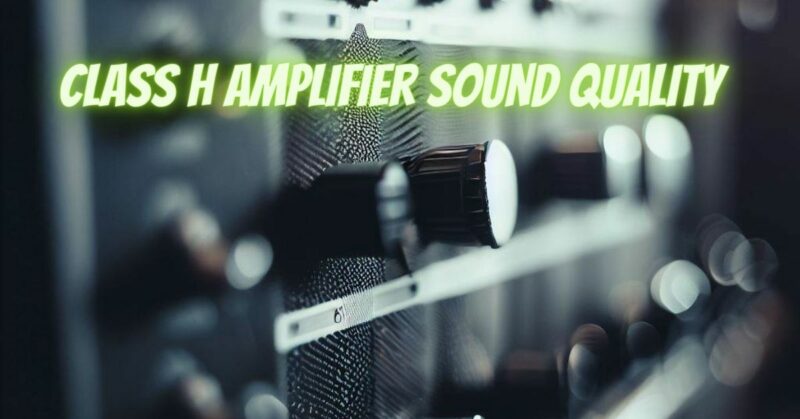In the world of audio amplification, various amplifier classes have been developed to cater to diverse audio applications and preferences. Among these classes, Class H amplifiers have gained attention for their unique design that aims to enhance efficiency without compromising sound quality. In this article, we will delve into the concept of Class H amplifier sound quality, exploring its advantages and how it delivers sonic excellence to audiophiles and sound enthusiasts.
Understanding Class H Amplifiers:
Class H amplifiers are a subclass of Class AB amplifiers, which are known for their low distortion and high-quality sound reproduction. Class H amplifiers take the concept further by implementing a dynamic power supply design, adapting to the input signal’s dynamic range to reduce power dissipation and improve overall efficiency.
The key feature of Class H amplifiers is the use of multiple power supply rails. These rails are modulated based on the audio input signal’s amplitude, enabling the amplifier to operate at different voltage levels depending on the required output power. By adjusting the supply voltage in real-time, Class H amplifiers can achieve higher efficiency compared to traditional Class AB amplifiers, especially during periods of low audio demand.
Advantages of Class H Amplifier Sound Quality:
- Enhanced Efficiency: One of the significant advantages of Class H amplifiers is their improved efficiency. The dynamic power supply design allows the amplifier to deliver higher output power without excessive power dissipation. This efficiency improvement reduces heat generation, minimizing the need for large heatsinks and enhancing overall energy utilization.
- Lower Distortion: Class H amplifiers inherit the low distortion characteristics of Class AB amplifiers, ensuring clean and accurate audio reproduction. The dynamic voltage switching helps maintain the signal’s fidelity, resulting in less distortion and a more natural sound signature.
- Reduced Heat and Energy Consumption: Due to their enhanced efficiency, Class H amplifiers generate less heat and consume less power than traditional Class AB amplifiers. This makes them suitable for applications where energy efficiency is a priority, such as in professional audio systems and high-power home theater setups.
- Increased Headroom: The dynamic voltage modulation in Class H amplifiers provides additional headroom for handling dynamic peaks in the audio signal. This results in improved transient response and the ability to reproduce complex musical passages with greater accuracy and clarity.
- Flexibility and Adaptability: Class H amplifiers offer the advantage of adaptability to varying audio demands. The ability to switch between different power supply rails in real-time allows the amplifier to efficiently handle both low-level signals and high-power transients.
Class H amplifier sound quality presents a compelling combination of efficiency and audio performance. By dynamically adjusting the power supply voltage based on the audio signal’s amplitude, Class H amplifiers deliver higher efficiency, lower distortion, and increased headroom compared to traditional Class AB amplifiers. These advantages make Class H amplifiers an attractive choice for applications that demand both sonic excellence and energy efficiency, such as professional audio systems, high-power home theater setups, and other audio enthusiasts seeking the perfect balance between performance and power efficiency.


